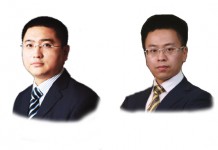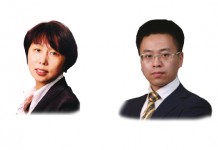As mentioned in last month’s issue, a governance structure where each party holds 50% equity interest has a serious defect: once the “personalised nature” of the company breaks down, giving rise to a “deadlock”, it is impossible to cure the situation through the company’s own equity governance structure. Under this situation, it is likely that a company dissolution dispute will occur, as no effective resolution can be passed.

Shi Anning
北京大成律师事务所
高级合伙人
Senior Partner
Dacheng Law Offices
Burden of proof and rules
The different interests of the parties for the dissolution of a company result in a difference in their approaches to the adducement of evidence. However, if the claims of either party are to secure judicial support, they must comply with the rules of evidence set out in the Company Law and its judicial interpretations.
The Interpretations of the Company Law (2) specify the conditions for the dissolution of a company where a shareholder alone or shareholders together hold at least 10% of all the shareholder voting rights and institute a legal action for the dissolution of the company on the grounds set out below, and if the provisions of article 183 of the Company Law are satisfied, the people’s court is required to accept the same:
- The company has been unable to call a shareholders’ meeting or shareholders’ general meeting for at least two years and serious difficulties have arisen in its operations and management;
- When they vote, the shareholders have been unable to reach the statutory percentage or the percentage specified in the company’s articles of association, making it impossible to pass a valid resolution of the shareholders’ meeting or shareholders’ general meeting for at least two years, and serious difficulties have arisen in the company’s operations and management;
- There has been a longstanding conflict between company directors that cannot be resolved by the shareholders’ meeting or shareholders’ general meeting, and serious difficulties have arisen in the company’s operations and management; or
- Another serious difficulty has arisen in the company’s operations and management and its continued existence would cause a material loss to the interests of the shareholders.
You must be a
subscribersubscribersubscribersubscriber
to read this content, please
subscribesubscribesubscribesubscribe
today.
For group subscribers, please click here to access.
Interested in group subscription? Please contact us.
你需要登录去解锁本文内容。欢迎注册账号。如果想阅读月刊所有文章,欢迎成为我们的订阅会员成为我们的订阅会员。
邮编:100020
7/F, Building D, 9 Dongdaqiao Road
Chaoyang District, Beijing 100020, China
电话 Tel: +86 10 5813 7799
传真 Fax: +86 10 5813 7788
电子信箱 E-mail:
anning.shi@dachenglaw.com
www.dachenglaw.com





























